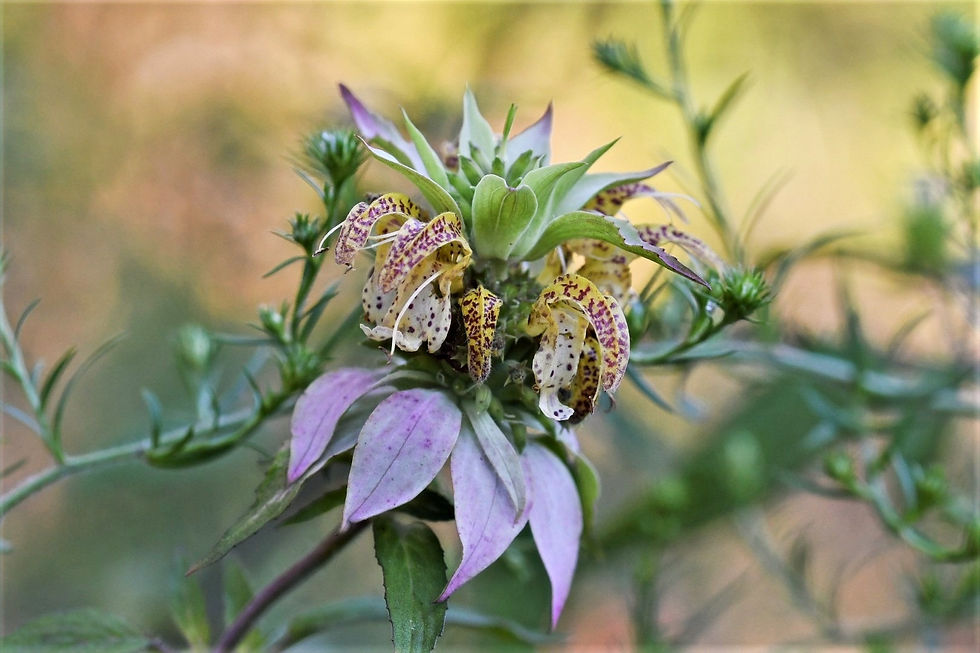My September blooming native plant #9 is spotted beebalm or horsemint (monarda punctata), a fragrant herb in the mint family with a medicinal and edible history. Various plant sites describe spotted beebalm’s flowers in detail, but you need to see a flower to appreciate its whimsical complexity. Some have compared it to a Dr. Seuss flower which makes sense when white, pink, purple, mauve, yellow, beige, and green are on the same flower!

Spotted beebalm does well in any of the dry, sunny and partly sunny areas of my yard where I’ve transplanted it. It seems to be somewhat drought tolerant. It is also a bit vulnerable to root rot and even in well-drained soil I lose a few plants in August when high temperatures and rain are the norm. Spotted beebalm doesn’t like wet feed and petered out after a year in a partly sunny, slightly moist area of my yard where my scarlet beebalm (monarda didyma) and wild bergamont (monarda fistula) thrive. It also isn't as vibrant as usual this year because it rained just about every day this summer.

I’ll admit that until recently I couldn’t figure out why different spotted beebalm plants died every year until I learned more about short-lived perennials which live more than the two years biennials do, but not as long as typical perennials. I’ve noticed spotted beebalm easily blooms from seed the first year, comes back strong the second and third, then dies. New Moon Nursery describes short-lived native perennials as landscape helpers. They flower the first year and are useful when a starting native plant area because they offer nectar for pollinators in a native plant community while other perennials can take 3 or so years to flower. Spotted beebalm gently sends out runners and easily self-seed so there is a cycle of plants in different life stages every year.

A naturalized or rewilded area such as a mini prairie, wildflower garden, or pollinator garden are all places spotted beebalm would be a fit. This one one of the first plants I added to my right-of-way strip after I removed all the grass by hand. This is a plant for a children’s garden, not only for the way it looks, but all the pollinators it attracts! Like most herbs it is resistant to deer and rabbits, so it would be a good plant for a meadow area in a restoration project.

Most importantly, spotted beebalm is a valuable addition to any ecosystem. It is a moth and butterfly host plant, a nectar plant for hummingbirds and insects, a seed source for hungry little winter birds.

There is also no question about whether it lives up to its name! In fall evenings or early mornings, I typically find multiple bees sleeping on spotted beebalm, and during the day the bee can’t seem to get enough of it!

.jpg)
